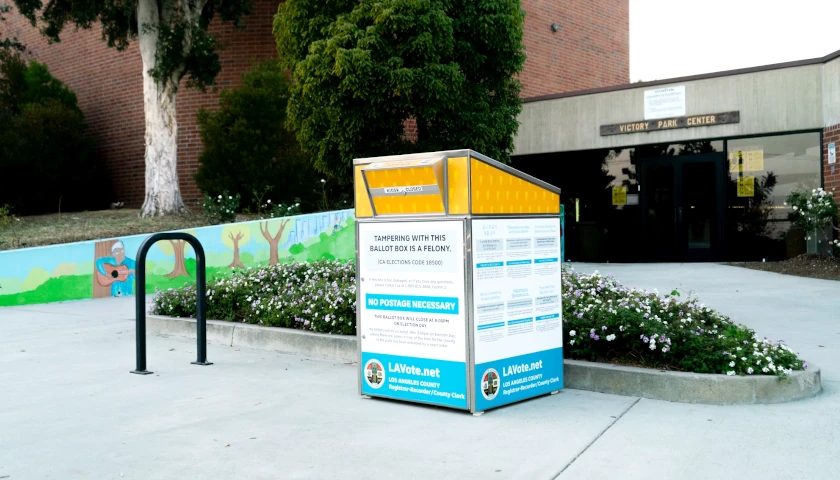by Spencer P. Morrison
Scott Adams, the creator of the popular cartoon “Dilbert,” transformed himself into a persona non grata in 2016 by exposing how Donald Trump manipulated the media by using sophisticated persuasion techniques. History proved Adams was correct and Trump won the election. As it turns out, Trump was not the bumbling blowhard of CNN’s fever dreams. He was a marketing mastermind whose words went far beyond “resonating” with ordinary Americans—they stuck. Epithets like crooked, lyin’, and low-energy were not just insults, they were silver bullets spoken by a silver tongue. Hillary, Ted, and Jeb didn’t know what hit ’em.
Two years on and Trump’s word-wizardry is as potent as ever – Pocahontas‘s racial fraud is now common knowledge, and Trump’s little rocket man jab arguably set the stage for North Korea’s denuclearization summit. At this point, Trump’s language is indistinguishable from political magic. For example, Trump’s push for “the wall” has turned ardent socialists into laissez-faire economists on the issue of illegal immigration – who cares if migration hurts America’s most vulnerable? We need aliens to grow the economy!
This flip-flop has made it clear to ordinary Americans: the Democratic Party cares more about illegal aliens than it does the common citizen.
Another Brick in the Wall
The Democratic Party shut down the government to avoid funding President Trump’s border wall with Mexico. In the meantime, the media has harped incessantly on the wall’s futility. The wall is too expensive, they claim. And in any event, the wall won’t work!
Nonsense. Illegal aliens cost American citizens more in three months than the wall will cost to build in its entirety. What’s more, the available evidence suggests that walls are fantastically effective at arresting migrant flows.
To begin with: how much will Trump’s wall cost to build?
In her informative piece, statistician Liberty Vittert estimates that Trump’s wall will cost some $25 billion to build. Vittert breaks her estimate down as follows:
Size of the wall: 1,150 miles long; 40 feet high; 10 feet deep into the ground; 1 foot wide
Total volume of material: 11.2 million cubic yards
Materials: Approximately $8.7 billion in concrete (97 percent of the materials); approximately $3.6 billion in steel (3 percent of the materials)
Labor: Approximately $12.3 billion (given the labor costs on the original 654 miles of barriers we can assume a conservative 1:1 ratio of materials to labor)
Land acquisition: About 60 percent of the border is privately owned land. While the federal government has the power to take privately owned property for public purposes, it must provide “just compensation.” Based on previous purchases from the 2006-2009 wall construction, the cost at most would be $300,000 per mile acquired, or approximately $200 million altogether.
In total, the actual physical cost of the wall would be about $25 billion.
Such a large project will require maintenance. Estimates suggest that the wall may cost $150 million to $750 million per year to maintain. This is not much in the grand scheme of things – especially when you consider that the wall likely will save money by making border control more efficient.
Many argue that the wall will be more expensive. The Cato Institute, for example, suggests that the wall will cost a total of $59.8 billion to construct. This does not include maintenance costs, but does include an inflationary modifier to account for the fact that government projects usually incur large cost overruns. This is reasonable – rarely has a government project cost less than expected. In any event, Cato‘s estimate is (by far) the highest of any mainstream estimates.
Reuters in 2017 reported an internal report compiled by the U.S. Department of Homeland Security estimated that a border wall would cost $21.6 billion to build. Meanwhile, an MIT study reported in the notoriously left-leaning Huffington Post suggests that the wall could cost $40 billion to build. Together, these studies give us a fairly wide range: a border wall as proposed by Trump could cost anywhere from $20 to $60 billion. This article will proceed using $25 billion as the (somewhat arbitrary) go-to estimate.
The Democrat’s Dilemma
Illegal aliens cause economic harm to Americans because they consume far more in government services than they contribute in taxes. We make: they take.
According to a 2017 report from the Federation for American Immigration Reform (FAIR), illegal aliens and their children cost American taxpayers $135 billion annually – $8,075 per alien per year. These costs are partially offset by taxes collected from illegal aliens, which total around $19 billion. Thus, the net cost of illegal immigrants to American taxpayers is $116 billion annually.
The report also details how those billions are spent. Unsurprisingly, state and local governments bear the majority (two-thirds) of the costs, spending $88 billion annually. The federal government has it relatively easy, spending just $45 billion. This is ironic, given that the federal government created this problem. What’s more, the federal government receives the lion’s share of taxes paid by illegal aliens ($15.4 billion), while state and local governments receive just $3.5 billion in annual taxes from illegal immigrants.
Unsurprisingly, the single greatest cost associated with illegal immigration is educating their children ($46 billion a year). Not only is this expensive, but it reduces school quality for American students. Consider that one-in-five California students is an illegal alien or anchor baby. This crowding is the main reason why California’s public school system is one of America’s worst: California has one of the highest student-teacher ratios and among the lowest per-student spending in America. Government also spends $29 billion on medical expenses, $23 billion on law enforcement, and $9 billion on straight-up welfare programs (some of which actually favor illegal aliens over American citizens).
Illegal aliens also cost Americans indirectly by sending $30 billion in remittances abroad per year – this is the “hidden tax” that Americans pay for illegal labor.
Functionally there is little difference between these remittances and a maximally inefficient tax. Consider: you hire a gardener who then remits five cents to the government as a sales tax. Now imagine that the government spends this money in Washington building marble monuments – none of the money returns to your community. This tax is maximally inefficient because you get no return for your “investment” in the common weal.
How is this any different than remittances? Americans hire illegal aliens, who then remit a large portion of their income back to their homeland. This money is spent abroad, never to return to your local community. Hypothetically it may return – a decade from now. But realistically, the velocity of money is reduced to nil. In this way, the remittances sent by illegal aliens are effectively a tax that Americans pay for the privilege of hiring “cheap” illegal labor.
For this reason, it is reasonable to bundle the remittances sent by illegal aliens in with America’s tax burden. This means that illegal aliens cost Americans $165 billion annually.
Old Dragon Head to Berlin
Walls work. Everyone knows this. It’s why we build them around prisons, military installations, and even our homes without hesitation. The confusion sets in when we talk about big walls. Well, I have news for you: big walls work too.
For example, in 2006 Congress passed the Secure Fence Act which required the construction of 850 miles of double-layered fencing to be built on the Mexican-American border. Although the Bush administration only completed 36.6 miles of said fencing (at Yuma) before Obama gutted the project, the results are telling. Between 2006 and 2015 border apprehensions at Yuma declined by 96 percent, falling from 138,438 to just 5,902. While I do not doubt that many migrants simply used other routes to enter America, this proves the point: walls and fences are powerful deterrents.
These findings are supported by a report released by the Senate Homeland Security and Governmental Affairs Committee. The report found that while the average interdiction rate along the U.S.-Mexican border is 50 percent, it was as low as just 5 percent in areas without fencing or vehicle barriers. Basically, walls and fences are a significant force multiplier for America’s border patrol agents – they delay migrants long enough for the authorities to apprehend them. They give America the edge in the endless game of “red rover” they currently play with migrants.
There is plenty of international evidence that walls work. For example, Hungary has claimed that fences along its borders with Croatia and Serbia have stemmed the flow of migrants by 99.7 percent since 2015. Specifically, “the number of successful attempts to illegally cross the border fell from 391,000 in 2015 to 18,236 in 2016 and only 1,184 in 2017” according to Gyorgy Bakondi, the Hungarian prime minister’s chief security advisor. Neighboring Austria refused to build a fence, and now their nation’s social services are being abused by migrants to a terminal degree.
Finally, even left-leaning Politico was forced to admit that walls are effective. Specifically, it found that the construction of a 150-mile long border wall between Israel and Egypt cut the number of illegal border crossings from 16,000 in 2011 to less than 20 in 2016. Basically, Israel’s wall was 100 percent effective.
America could build a highly-effective border wall for some $25 billion. Meanwhile, illegal aliens cost Americans $165 billion worth of taxes and remittances every year. Do the math.
– – –
Spencer P. Morrison is a writer and author of Bobbins, Not Gold. He is the editor-in-chief of the National Economics Editorial. Follow him on Twitter @SPMorrison_.
Photo “Border Barrier” by MJCdetroit CC3.0.




